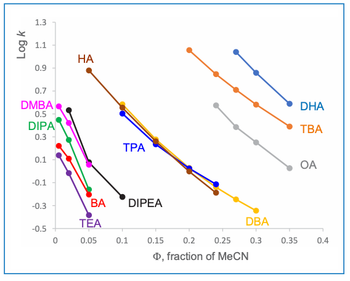Key Points
- Phenolic compounds can have important functions and serve as part of vital processes in plants; as such, tracking them and their functions in plant species is important.
- Researchers used liquid chromatography-based techniques to analyze secondary metabolites in shea kernels.
- The scientists' findings proved encouraging, with future efforts aiming to further research the contributions from phenolics to antioxidative protection of shea kernels and their triglyceride portions.
University of Copenhagen researchers recently developed a new means of profiling phenolic constituents in shea using two-dimensional liquid chromatography. Their findings were published in the Journal of Chromatography A (1).
Phenolic compounds are metabolites derived from the secondary pathways of plants (2). Typically consisting of an aromatic ring that bears at least one free hydroxy substituent or functional derivative, these substances are typically found in plant products like fruits, vegetables, roots, and leaves. These substances are related to various functions and processes in plants, such as accelerating pollination or providing defense against herbivores, as well as antibacterial and antifungal activities (3). As such, researchers have taken note of these substances, working to track them and their functions in different plant species.
A species of tree indigenous to West Africa, the fruit of the shea tree (Vitellaria paradoxa) plays an important role in the local diet, being sources of carbohydrates, vitamins, and minerals (4). The kernels, which contain up to 60% triglycerides, are traditionally processed to produce shea butter for food and skincare. Despite high global demand, shea kernel supply remains limited. The shea belt hosts approximately 1.84 billion shea trees, supporting over 18 million women involved in shea collection and processing, according to a paper published in Food Security (5). Kernel quality has been defined by high triglyceride and low free fatty content; however, they also contain bioactive secondary metabolites, such as phenolic compounds, that offer additional health benefits and present opportunities for further valorization.
In this study, the researchers applied two-dimensional liquid chromatography (RPLC × HILIC) coupled with electrospray cyclic ion mobility quadrupole time-of-flight mass spectrometry (ESI-Q-cIMS-qTOF) and data-independent acquisition (DIA) for non-targeted analysis of secondary metabolites in shea. This four-dimensional (4D) separation method allows for highly structured compound organization within the RPLC × HILIC × cIMS × high-resolution MS (HRMS) separation space. Simultaneously, it provided experimental collision cross-section (CCS) values for each identified compound. In using single-pass cIMS before fragmentation onset, clean fragmentation spectra were obtained in DIA mode without precursor ion isolation. To support this chemical separation process, a data handling and visualization framework was devised to process LC × LC × cIMS × HRMS data, accommodating both low and high collision energy traces, in a flexible computing environment.
2D chromatograms revealed distinct regions occupied by specific chemical classes, facilitating compound annotation based on HRMS and CCS data. The CCS values showed maximum deviation of 2.9%, and equivalent to the inherent CCS calibration error, from experimental values from the AllCCS database. There was also deviation of 0.1–6.6% (with a mean value of 3.4%) from the predicted values, confirming the existence of compound identities.
Key findings included the first-time identification of epitaxifolin, procyanidins B1-B4, prodelphinidins B1-B4, isoorientin and isoquercitrin in shea. These substances were 1.3–9 times more abundant in shells; in kernels, flavone glycosides, flavan-3-ols and their dimers, including mono- and di-galloylated forms were found, being 1.9–50 times higher within them. Quercetin-species levels in shells were notably 4–15 times higher than in kernels.
The analytical platform displayed high spectral purity in DIA mode, largely due to the precursor ions’ arrival time separation prior to fragmentation. In certain cases, the single pass cIMS held the potential to separate isobaric (isoorientin and quercitrin) and near-isobaric (ellagic acid and quercetin) ions. However, accessing the fully resolved and structured 4D data requires customized computing tools, due to a lack of fit-for-purpose software. This highlights the barriers stopping these techniques from becoming adopted on a broader level.
With these findings, the scientists feel encouraged to further research the contributions from phenolics to antioxidative protection of shea kernels and their triglyceride portions. There is potential for the greater valorization of shea, including shea byproducts, in nutraceuticals, cosmetics, and other industries. 4D analytical techniques have potential future roles in plant and food metabolomics, though flexible data handling solutions are needed to enable information extraction from these complex data sets.
References
(1) Nielson, N. J.; Kronik, O. M.; Neran, R. A. F.; Christensen, J. H. Data-Independent Profiling of Phenolic Constituents in Shea Using Comprehensive Two-Dimensional Lliquid Chromatography (RPLC × HILIC) Hyphenated to Cyclic Ion Mobility-Quadrupole-Time-of-Flight Mass Spectrometry. J. Chromatogr. A 2025, 1756, 466092. DOI: 10.1016/j.chroma.2025.466092
(2) Phenolic Compound. ScienceDirect 2019. https://www.sciencedirect.com/topics/chemistry/phenolic-compound (accessed 2025-6-9)
(3) Lin, D.; Xiao, M.; Zhao, J.; et al. An Overview of Plant Phenolic Compounds and Their Importance in Human Nutrition and Management of Type 2 Diabetes. Molecules 2016, 21 (10), 1374. DOI: 10.3390/molecules21101374
(4) Vitellaria Paradoxa. ScienceDirect 2012. https://www.sciencedirect.com/topics/agricultural-and-biological-sciences/vitellaria-paradoxa (accessed 2025-6-4)
(5) Naughton, C. C.; Deubel, T. F.; Mihelcic, J. R. Household Food Security, Economic Empowerment, and the Social Capital of Women’s Shea Butter Production in Mali. Food Security 2017, 9, 773–784. DOI: 10.1007/s12571-017-0706-y





